Conclusion
We’ve been ready months to get a greater concept of whether or not the Ryzen 9 5900HX or the 11th gen Core i9-11980HK is the higher gaming CPU. From what we will see immediately, at the very least, we’d have to offer it to the 11th-gen Core i9, which typically has a decent-to-dominant benefit within the video games we ran.
If the Ryzen have been paired with a quicker GPU, would the competitors be nearer? Most likely, however we don’t suppose it will be sufficient to beat the 11th-gen Core i9. With that stated, in most GPU-limited video games, we predict it will be so shut you actually couldn’t go flawed with both. In video games that lean on the CPU extra, as we noticed in CS:GO and Siege, the Core i9 is unlikely to be touched by that Ryzen 9.
So sure, in case you are chasing the best body charges in gaming interval, the 11th-gen Tiger Lake H must be what you attain for more often than not.
Notice: Whenever you buy one thing after clicking hyperlinks in our articles, we might earn a small fee. Learn our affiliate hyperlink coverage for extra particulars.
Архитектурный дизайн Alder Lake
Alder Lake использует гибридную архитектуру, объединяющую два типа вычислительных ядер. Первое – это производительное ядро, которое отражает то, что вы обычно найдёте в новом поколении процессоров, а второе – это эффективное ядро, которое используется для обработки фоновых задач и приложений, которым требуется много ядер.
Intel проектирует оба ядра на Intel 7, что является новым названием узла Enhanced 10nm SuperFin. Ядра Golden Cove самые большие, и они выполняют большую часть работы, которую вы выполняете на компьютере. Ядра Gracemont самые маленькие, и они полезны для выполнения фоновых задач или экономии заряда батареи, когда производительное ядро не требуется.
Ядра Golden Cove ориентированы на высокочастотную однопоточную производительность. Компания заявляет, что, используя новый движок Intel Matrix, ядра будут работать на более высоких частотах во всех приложениях.
Механизм Matrix – это сопроцессор, который обрабатывает умножение матриц, что, в частности, может ускорить рабочие нагрузки ИИ.
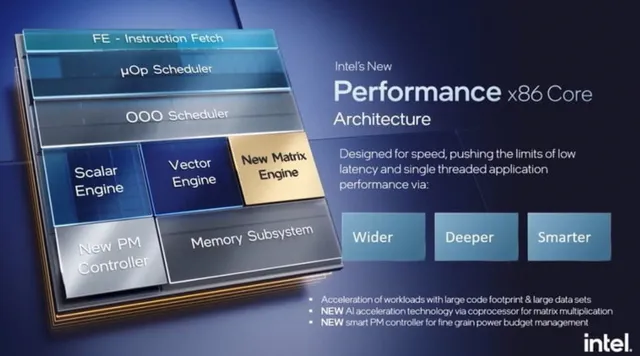
Ядра Gracemont справляются с другой стороной спектра производительности. Intel говорит, что все они ориентированы на многопоточную производительность: выполнение нескольких лёгких задач на нескольких ядрах. Intel заявляет, что они могут работать, примерно, на 40% эффективнее по сравнению со старыми ядрами SkyLake при той же мощности.
Объединение двух основных конструкций представляет собой серию межсоединений с высокой пропускной способностью. Вычислительная структура связывает два ядра вместе с пропускной способностью до 1000 Гбит/с, структура I/O обеспечивает пропускную способность до 64 Гбит/с между входами и подсистемой памяти, а структура памяти обеспечивает пропускную способность до 204 Гбит/с между памятью и остальной частью процессора.
Другие изменения в Alder Lake включают поддержку PCIe Gen 5 и PCIe Gen 4, а также памяти DDR5 и DDR4. Хотя Alder Lake поддерживает оба поколения системной памяти DDR, производитель платы должен решить, какой стандарт поддерживать. Пользователи не могут смешивать модули DDR4 и DDR5 на одной плате. Thunderbolt 4 и Wi-Fi 6E Gig+ также поддерживаются в Alder Lake.
Ходят слухи, что Intel продолжит поддерживать память DDR4 для своих процессоров Raptor Lake 13-го поколения.
Модули DDR5 поддерживают XMP 3.0. Эта новая версия XMP поставляется со множеством обновлений, включая до двух пользовательских профилей, всего пять встроенных профилей и поддержку настройки операционной системы.
11th gen Core i9-11980HK rendering performance
The Intel 11th-gen Tiger Lake H simply crushes Ryzen 5000 and 10th-gen Intel CPUs, and it’s no surprise. Intel has been pushing AI and Deep Learning performance as a key feature of its chip, and it shows.
How much this matters to you very much depends on what you do, of course. AMD fans may point out that very few applications currently support AI or Intel’s DL Boost. From what we’ve seen so far though, it’s very compelling technology.
On a more practical level, you may be interested to see how these laptops perform in Adobe’s Photoshop and Lightroom Classic. For that we use UL’s Procyon benchmark, which runs scripts within Photoshop and Lightroom Classic to determine performance. Adobe products are rich applications with hundreds if not thousands of functions, and Procyon is but a small sample of them. Still, it’s probably about as real-world as you can get, a good gauge of the entire laptop’s performance with the CPU and GPU making up a large portion of that.
Who wins? We can say that the 11th-gen Tiger Lake has a definite edge, with the MSI GE76 and its Core i9-11980HK and GeForce RTX 3080 Laptop GPU about 9 percent faster than the Asus Strix Scar G17 with its Ryzen 9 5900HX chip and GeForce RTX 3080 Laptop GPU. While you might think the 165-watt TGP GPU in the MSI is the X factor here, the argument against that is the performance of the Gigabyte Aorus 17G. That laptop features a Core i7-11800H and a GeForce RTX 3080 Laptop GPU at a 105-watt TGP, and it still comes in a hair faster than the Ryzen 9 and 130-watt GeForce RTX 3080 Laptop GPU.
That’s all great for 11th-gen, but we also want to point out how you can rapidly hit diminishing returns with a fat GPU in Adobe products. For example, the Intel reference laptop with its Core i9-11980HK and GeForce RTX 3060 Laptop GPU is only 3 percent slower than the larger and heavier MSI laptop.
Besides still-photo editing, Procyon also has a mode where it uses Adobe Premiere Pro to export videos using the YouTube preset, at 4K resolution with Lumatri color correction and other tweaks. Once again the 11th-gen Core i9-11980HK with its 165-watt GPU and the 11th-gen Core i7-11800H with its 105-watt GPU outpace the Ryzen 9 5900HX with its 130-watt GPU. We should also point out that the Core i9-11980HK paired with the GeForce RTX 3060 Laptop GPU in the Intel reference laptop is almost as fast as the Ryzen, and only about 15 percent slower than the much larger MSI.
So yes, overall, the best performer is the 11th-gen Core i9 in the GE76 Raider, but we think there’s a good argument that newest GeForce RTX 30-series based laptops do well. We also think that while the smaller Intel reference laptop with its 16-inch screen won’t hang in gaming with the bigger gaming laptops, it might be the better laptop for a creation professional looking to shed pounds while only giving up a little performance.
Gigabyte Aorus 17X review: performance and features
(Image credit: Future)
Simply put, this is one of the most powerful gaming laptops on the market at the moment: our review unit (the YD model) came with an 11th-gen Intel Core i9-11980HK processor, 64GB of RAM, and an Nvidia GeForce RTX 3080 GPU that is very happy running the most demanding games out there at the moment. If you know your specs you’ll know how impressive that is for a gaming laptop – if you don’t, let us assure you that you’re getting a phenomenal amount of processing and graphics power.
In the Time Spy benchmark test from 3DMark, the Aorus 17X scored a huge 11,746 when we ran it – better than 93 percent of results in the Time Spy database. For comparison purposes, the high-end gaming PC average score is 11,085, the gaming PC average score is 9,216, and the gaming laptop average score is 5,730. As we’ve already mentioned, this is a beast of a machine that will even outdo a lot of desktop rigs with more space and more elaborate cooling systems available to them.
This laptop is going to run your AAA games at their best settings and hardly break a sweat: we were seeing frame rates of 60-80 frames per second in the hugely demanding Cyberpunk 2077, and 90-110 frames per second in the slightly older and less intensive Red Dead Redemption 2. That’s with the graphics options almost maxed out in those two games as well, and while there was a fair bit of fan noise throughout, it never became a major problem that would distract you from your gameplay (no doubt thanks to the wind pipes and vapour chamber that Gigabyte has fitted in here.
The Omron-switch mechanical keyboard that Gigabyte has fitted here is a dream to use too, offering superb precision and an excellent feel, and the trackpad isn’t bad either. As for battery life, we saw drops of about 22 percent per hour when streaming videos – that’s with the screen at full brightness but the system otherwise in battery saving mode. When you’re gaming, you’re going to get significantly less time between charges, as the CPU and GPU will still be in demand.
The best 2-in-1 laptops, ranked
Gigabyte Aorus 17X review: screen and design
(Image credit: Gigabyte)
There are some gaming laptops that you can take into the office or the lecture theatre and pass them off as general purpose computers – but that’s not the case with the Gigabyte Aorus 17X. It’s large, and bright, with RGB lighting behind the individual keys, just underneath the screen, and on the front of the laptop too. With plenty of angular black plastic and some large cooling vents, this is very much a gaming laptop in terms of its overall aesthetics.
It’s not really a subtle design, but we like it nevertheless. Remember you’re getting a 17-inch laptop here: dimensions of 396 mm x 293 mm x 38 mm (15.59 inches x 11.53 inches x 1.49 inches) and a weight of 3.75 kg (8.26 lbs) mean this isn’t an ideal laptop for carrying around the house or taking on the commute with you. You can of course transport it from place to place fairly easily, but it’s a long way from being a lightweight laptop, and if portability is paramount you might want to drop down to a 15-inch model.
The large size of the Aorus 17X has its benefits, including lots of room for ports – you get three USB 3.2 Gen 1 Type-A ports, two USB 3.2 Gen 1 Type-C ports, one Thunderbolt 4 Type-C port, one HDMI 2.1 port, one headphone out port, one microphone in port, one UHS-II SD card reader slot and an Ethernet port for a faster, more stable connection to the web if the Wi-Fi 6 integration isn’t really doing it for you. There’s a webcam too, but it’s positioned below the monitor, so it’s often looking up your noise.
As for the display, it’s a rather fantastic one. The 17.3-inch, 1,920 x 1,080 pixel IPS LCD panel runs at an impressive refresh rate of 300Hz, and shows off games brilliantly (it’s not bad when it comes to photos, movies and websites either). Colours are vibrant and rich, blacks are deep and distinct, and there’s no hint of ghosting or lag as characters, objects and scenes speed by. The bezels around the sides are nice and thin too, which we like.
All the best student laptops are right here
What’s in a TGP
One important detail worth pointing out is the different Total Graphics Power (TGP) ratings for each laptop. The TGP is the Nvidia spec for what the GPU’s maximum thermal budget is. Nvidia has a wide menu of options for every GPU, making apples-to-apples comparisons very difficult. Even if you could get the same TGP-rated GPU, you can’t divorce the GPU or CPU from the laptop. Ultimately every laptop has its own performance personality.
When you’re considering a 155-watt TGP laptop vs. a 130-watt TGP laptop vs. a 105-watt TGP laptop, it actually doesn’t matter if you can’t buy the one you want. Looking at high-end laptops, we know of only a single Ryzen 9-based laptop with a 155-watt TGP GeForce GPU in it. The vast majority are 130-watt TGP or lower.
Лучшие в технологиях, но не совсем в игровом мастерстве
Aorus 17G занимает место среди элитных игровых ноутбуков благодаря первоклассному дизайну и новейшим технологиям. Его восьмиядерный процессор Intel Tiger Lake H-класса заметно превосходит предыдущий чип Comet Lake-H, и он в полной мере использует преимущества новой платформы, включая хранилище PCI Express 4.0 и Thunderbolt 4.

Несмотря на все эти технологии, игровая производительность Aorus 17G не выделяется, поскольку он использует версию GeForce RTX 3080 Max-Q с ограниченным энергопотреблением, поэтому более производительный Alienware m17 R4 остается нашим выбором редакции. высококлассный игровой ноутбук с диагональю 17,3 дюйма. Тем не менее, тем, кому требуется практичное время автономной работы или более сдержанный дизайн, следует оставить Aorus 17G в шорт-листе, и вполне возможно, что продолжающаяся нехватка кремния может сместить экономическое преимущество в его пользу.
Этот информационный бюллетень может содержать рекламу, предложения или партнерские ссылки. Подписка на информационный бюллетень означает ваше согласие с нашими Условия эксплуатации а также Политика конфиденциальности. Вы можете отказаться от подписки на информационные бюллетени в любое время.
Verdict
An Intel i7 laptop is a fine choice for a variety of users, whether they’re interested in business pursuits, content editing or gaming. It offers multiple cores, a good amount of cache, advanced chipsets, and compatibility with overclocking.
The performance wins over the previous generation are palpable, which make it a good bet for versatile purposes, holding its own even against the latest i9 processors.
Picking the right i7 laptop is a decision you should take based on your overarching needs: portability, budget, visual finesse, etc. For example, the Acer Predator Helios 300 is a great choice for budget gaming.
It brings together a fantastic graphics card, a vivid display and good-quality audio—complementing the pro-gaming i7 CPU. In the same vein, you can pickr the Dell XPS 15 9520 if you wish to derive the best unplugged usage.
MSI is also a dependable option that combines the best of heat dissipation, battery backup and display technologies.
From multimedia experiences to 3D simulation, everyday tasks to business activities, Intel i7 processors deliver a wide array of benefits to users, driving home just what has made Intel such a dependable brand all these years.
What’s in a TGP
One essential element value mentioning is the totally different Whole Graphics Energy (TGP) scores for every laptop computer. The TGP is the Nvidia spec for what the GPU’s most thermal finances is. Nvidia has a large menu of choices for each GPU, making apples-to-apples comparisons very troublesome. Even should you might get the identical TGP-rated GPU, you may’t divorce the GPU or CPU from the laptop computer. Finally each laptop computer has its personal efficiency character.
Whenever you’re contemplating a 155-watt TGP laptop computer vs. a 130-watt TGP laptop computer vs. a 105-watt TGP laptop computer, it truly doesn’t matter should you can’t purchase the one you need. Taking a look at high-end laptops, we all know of solely a single Ryzen 9-based laptop computer with a 155-watt TGP GeForce GPU in it. The overwhelming majority are 130-watt TGP or decrease.
CPU thread efficiency
We’ll shut out our overview with two CPU assessments, the place we run the older Cinebench R15 utilizing 1 thread all the way in which to 16 threads. As a result of few apps use the entire cores of a CPU, it is a good option to visualize the realm of power a selected CPU has. For instance, the Ryzen 9 5900HX simply crushes the older 10th-gen Intel CPUs simply above all over the place after we do that. Intel’s 11th-gen Tiger Lake H CPUs aren’t that weak, although, and you may see from the outcomes.
That will help you visualize this, we present the variations between the 11th-gen Intel and the Ryzen 5000 as a proportion change. As you may see, the 11th-gen Core i9-11980HK has a small benefit on frivolously threaded duties, whereas the Ryzen 9 5900HX has a slight benefit on closely threaded duties.
PCIe performance
Our last result looks at the PCIe bandwidth capability of the laptops using 3DMark’s PCIe Bandwidth module. The test transfers data to the graphics card and back. As you can see the 16 lanes of PCIe Gen 4 in the 11th-gen Core i9 has a huge advantage over the previous 10th-gen, which is limited to 16 lanes of PCIe Gen 3. The Ryzen 9 laptops do even worse, because AMD’s mobile parts are limited to 8 lanes of PCIe Gen 3.
In theory, the 11th-gen chips have a huge advantage in bandwidth. On paper, though, it probably isn’t the game-changing figure you think it is. That’s because few consumer applications or games take advantage of all that bandwidth.
AMD might be a little constrained, but probably not enough to matter. The strength of the PCIe bandwidth in the 11th-gen probably makes more sense put to other tasks. The laptop, for example, supports PCIe 4.0 SSDs, which far eclipse the performance of PCIe 3.0 drives and can even support multiple drives at Gen 4.0 speeds.
That’s a real advantage that favors the 11th-gen CPUs.
Audio on the Gigabyte Aorus 17G
The Aorus 17G has two bottom-firing speakers, one on either side, that tend to produce accurate sound but have an issue with volume.
I tested these speakers by listening to Driver’s License by Olivia Rodrigo. The most noticeable issue I had was that the song didn’t become audible until I hit about 30% volume and didn’t get comfortable until about 55 — 60% volume. On max volume, that song was able to fill my whole office, but didn’t hit much of the rest of my 2-bedroom apartment.
Sound quality was full-bodied during the test, with clear voices and bass and no sign of tinniness. However, throughout my whole test, the song also sounded somewhat muffled, as if the laptop was struggling to push it out.
Asus
Asus has new Zephyrus laptops to bring to the table today. First is the Zephyrus M16, which will sit above its more mainstream G-series laptops like the Zephyrus G14 and Zephyrus G15. Asus says the M16 will be configurable with up to an Nvidia RTX 3070 GPU, alongside Intel’s H-series chips. In terms of its display, the Zephyrus M16 has a tall 16:10 aspect ratio, QHD resolution, and 165Hz refresh rate. The company is also announcing the Zephyrus S17, a premium gaming laptop, which is available with up to an Intel Core i9-11900H, 48GB of RAM, and an Nvidia RTX 3080 with 16GB of VRAM.
Pricing and release information for the Zephyrus M16 is yet to be announced. The Zephyrus S17 will be available at some point in Q2 in North America. Read more about Asus’ new laptops here.
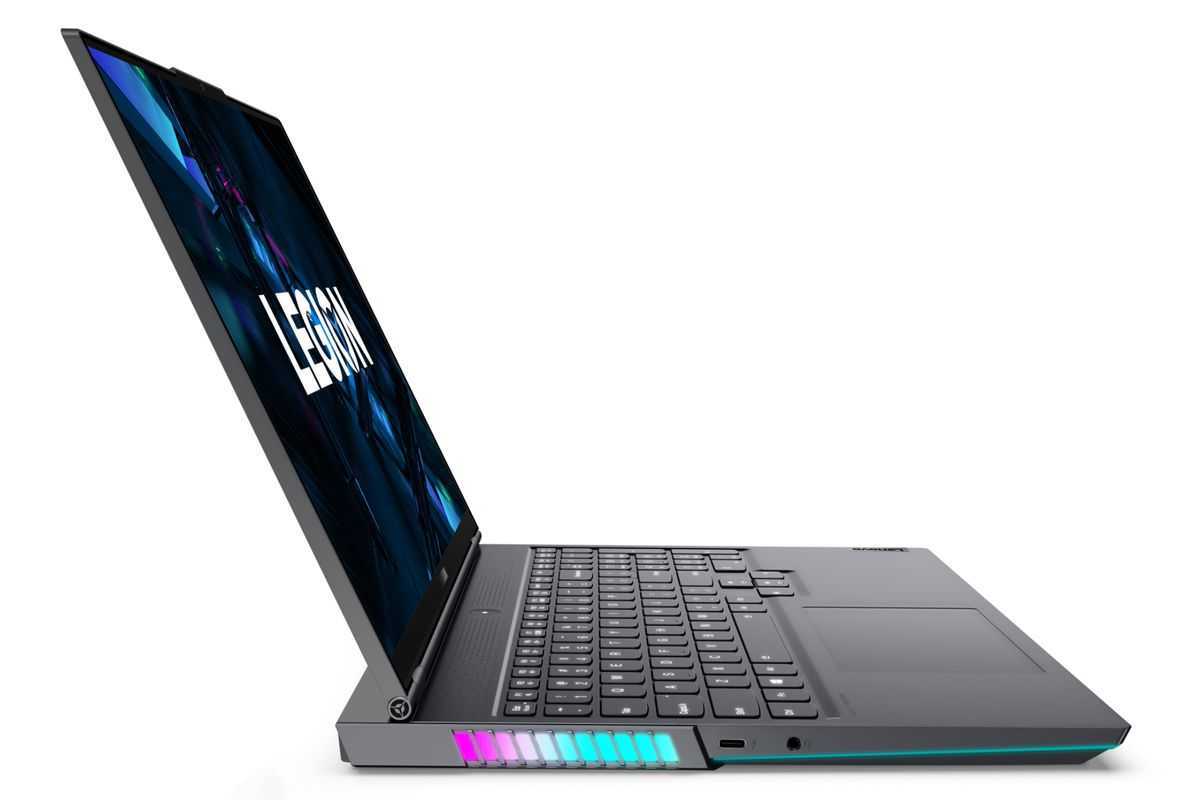
The Lenovo Legion 7.Lenovo
Оригинал! Apple MacBook Pro 15″ Intel Core i7 Quad-core 16 г
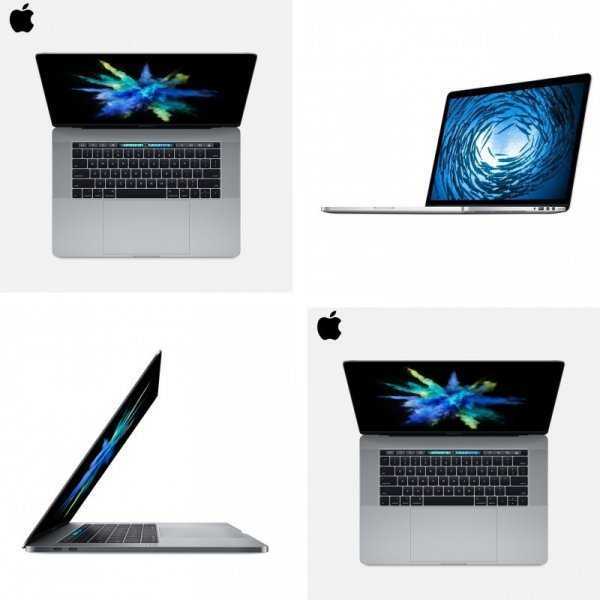
Обязательно закажи на сайте Алиэкспресс с бесплатной доставкой по России.
Ноутбук шикарный, отправлял продавец очень долго, разговоры с ним тоже были долгие и медленные, по России шёл всего 9 дней до вручения, но до неё добрался только через 20 дней, статусы с опозданиями были, долгое время думал что это вообще развод. Коробка пришла с повреждениями, очень переживал, но сам ноутбук не пострадал. Заказывал версию silver пришёл space grey, в целом, не сильно расстроился, даже наоборот)
Delan
Доставили менее, чем за 14 дней. Оригинал, коробка в пленке. Работает шикарно.
CMeTaHy_EM
Претензия имеется к упаковке, коробка была вся помята, но компьютер не пострадал. В остальном все соответствует.
Т@пOk_Бобр@
Посмотреть на АлиЭкспресс:
Display of Aorus 17G
(Image credit: Tom’s Hardware)
Aside from its GPU, another key innovation for the Aorus 17G is its 300 Hz IPS-level display. I tested this screen in two separate ways. First, I watched a trailer for Wandavision (one with color and widescreen, don’t worry), and second, I played Overwatch on it.
In Wandavision, I was impressed by the color quality and even the depth of blacks, but found viewing angles and reflectivity to be a big problem. While vertical viewing angles were almost complete, the screen’s image washed out whenever I strayed more than 45 degrees away from it horizontally. More problematic than this, though, was glare. I had to be certain my screen was pointing away from light, or else my image would reflect back at me even within perfect viewing angles.
In Overwatch, I was in love. While I’m doubtful that refresh rates over 144 Hz can really make one better in a game if they haven’t trained for professional esports, high refresh rates just feel responsive and pleasing to my eyes. I love being able to see as many frames of Overwatch’s gloriously detailed animation as possible, and to feel like my screen is almost instantly reacting to me. That said, I’m not sure I noticed too much of a difference between this display and the 240 Hz display I saw on the last Aorus I reviewed. How well you can distinguish between frame rates, however, tends to be highly personal.
(Image credit: Tom’s Hardware)
Looking at our benchmarking results, I was surprised to see that the Aorus 17G actually covers less of the DCI-P3 color spectrum than competitors. It tops out at 79% versus the Scar 17’s 88.5% score, the Razer Blade Pro 17’s 84.1% score and the Alienware m15 R4’s whopping 149.5% score (thanks to a slower OLED screen). This is something I didn’t notice much in practice, though while my colors didn’t come across as flat, neither were they especially vivid.
The same pattern applied to brightness. The Aorus 17G had 300 nits of average brightness, while the Scar 17 had 336 nits, the Blade Pro had 304 nits and the m15 R4 had 362 nits. 300 nits of brightness was plenty for my purposes, and was a welcome increase over the unfortunately-dim 243 nits I saw on my last Aorus laptop.
Specifications
Variants:KD
XD
YD
Connectivity
Ports
1x Thunderbolt 4 + 3x USB 3.2 Gen1 + 1x HDMI 2.1 + 1x mini DisplayPort 1.4 + 1x Headphone + 1x Microphone + 1x SD + 1x RJ45 (2.5Gbps)
Wireless Connectivity
WiFi 6 + Bluetooth 5.2
Display
Aspect Ratio
16:9
Display Diagonal
17.3 inch
Display Type
IPS, matte
Gamut
72% NTSC
Refresh Rate
300 Hz
Resolution
FHD (1920×1080)
Function
Audio
DTS:X Ultra
Chipset
Mobile Intel HM570 Express Chipset
KDGraphics
NVIDIA GeForce RTX 3060 6GB
XDGraphics
NVIDIA GeForce RTX 3070 8GB
YDGraphics
NVIDIA GeForce RTX 3080 16GB
Keyboard Backlight
AORUS Fusion RGB Per-Key
Operating System
Windows 10
Processor
11th-gen Intel Core i7-11800H Tiger Lake
Security
Firmware-based TPM, supports Intel Platform Trust Technology (Intel PTT)
Performance
Durability
Keyboard: 15 million keystrokes
Key Travel
2.5mm (Mechanical Keyboard w/ OMRON Gaming Switch)
Memory | Capacity
2x SO-DIMMs, Max 64GB
Memory | Type
DDR4 3200MHz
Power Supply
230 W
Storage
1x M.2 SSD 2280 PCIe Gen3 / SATA + 1x M.2 SSD 2280 PCIe Gen4
Линейка ноутбуков Gigabyte AORUS и AERO 2022 включает в себя процессоры Intel Alder Lake и графические процессоры NVIDIA GeForce RTX 3080 Ti
Последняя линейка ноутбуков от Gigabyte включает модели AORUS 17, AORUS 15, AERO 16 и AERO 15, каждая из которых оснащена процессорами Intel Alder Lake-P и графическими процессорами NVIDIA GeForce RTX 30. Каждая модель поставляется в различных конфигурациях на выбор, так что давайте начнем.
Ноутбуки Gigabyte AORUS 17 (2022)
Ноутбуки Gigabyte AORUS 17 выпускаются в трех конфигурациях: AORUS 17 YE, AORUS 17 XE и AORUS 17 KE. Разница между этими ноутбуками в основном заключается в самом графическом процессоре: YE с NVIDIA GeForce RTX 3080 Ti 16 ГБ (115 Вт), XE с RTX 3070 Ti 8 ГБ (115 Вт) и KE с RTX 3060 6 ГБ (100 Вт).).
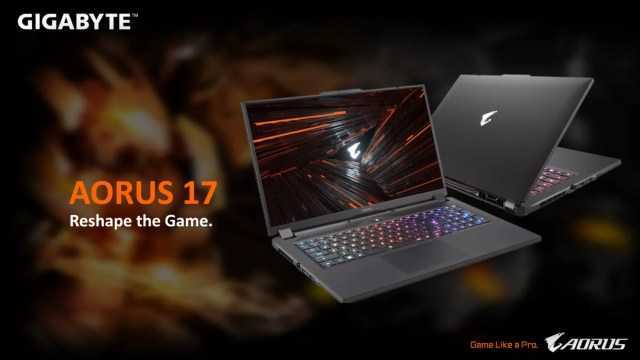
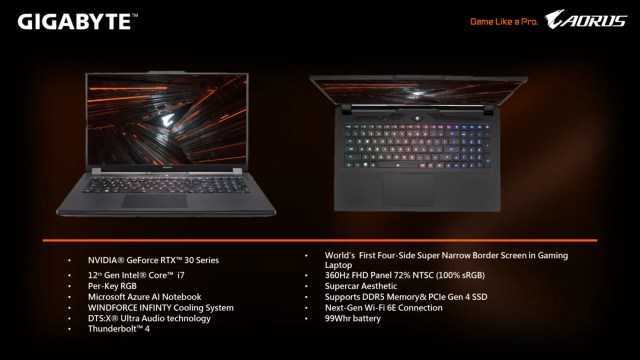

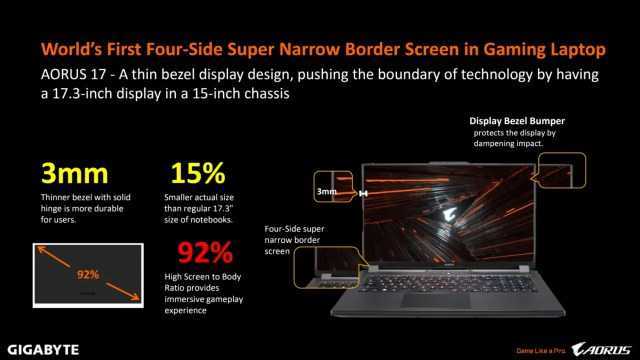
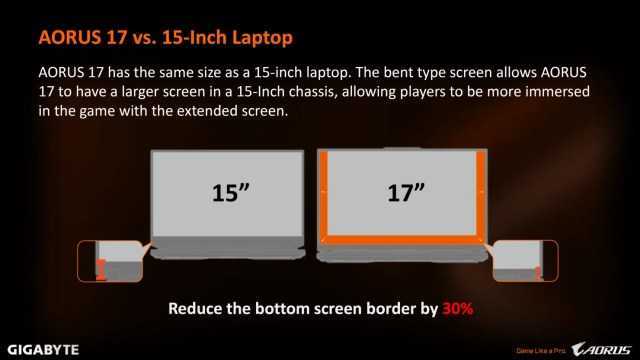
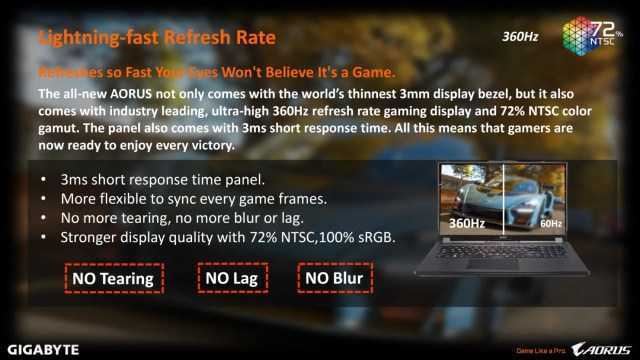
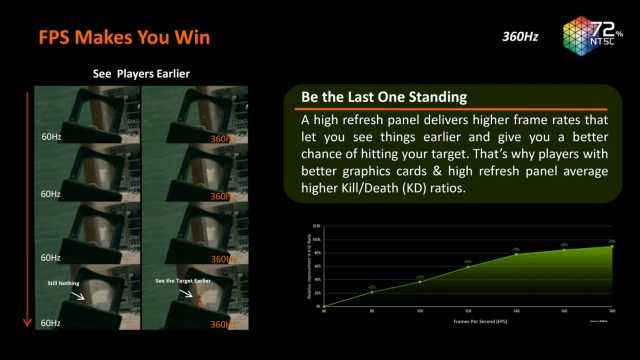
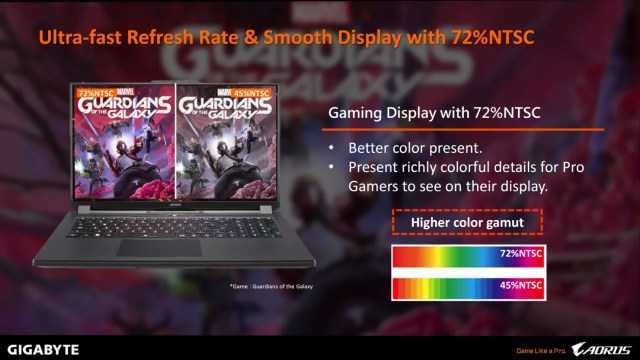

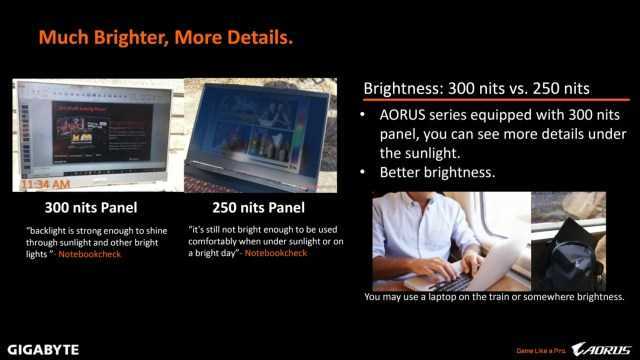
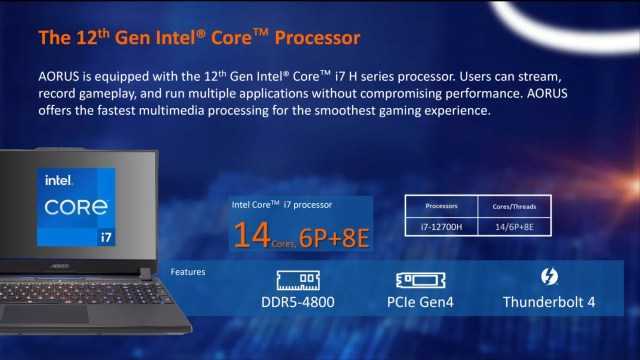
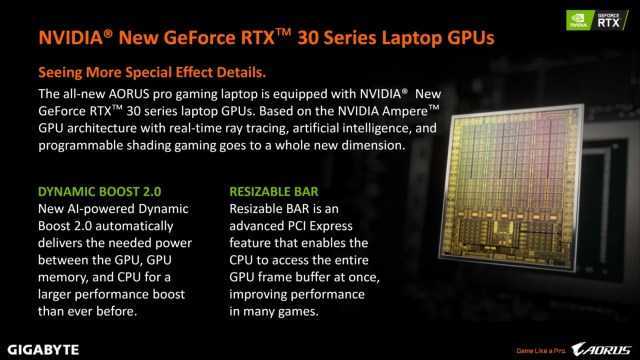
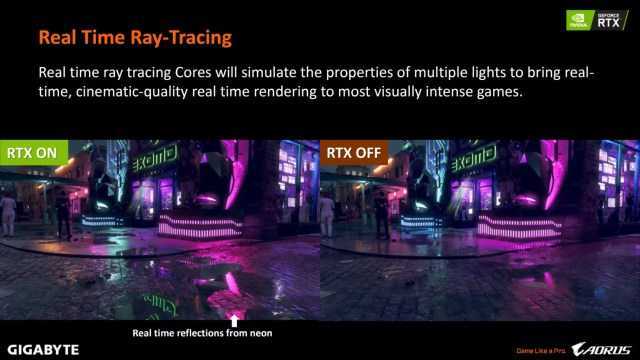
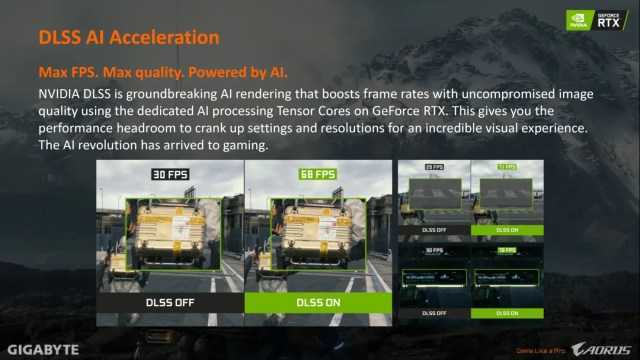
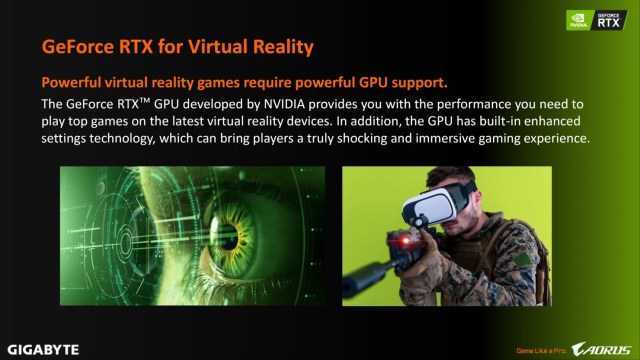
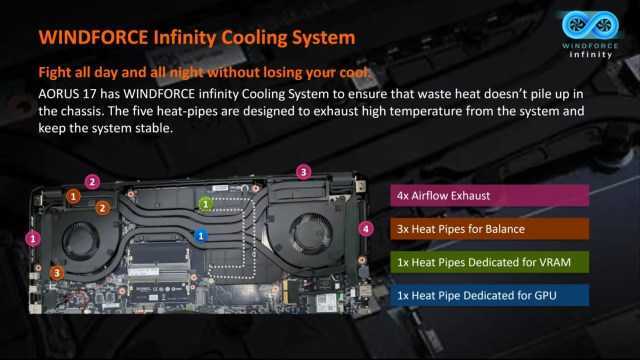
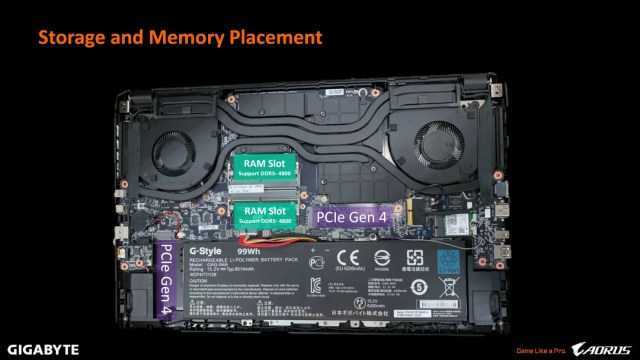
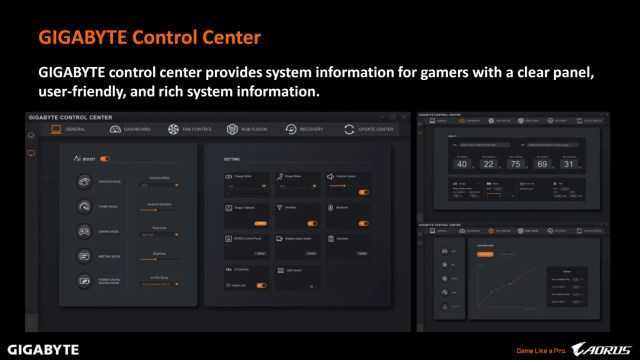
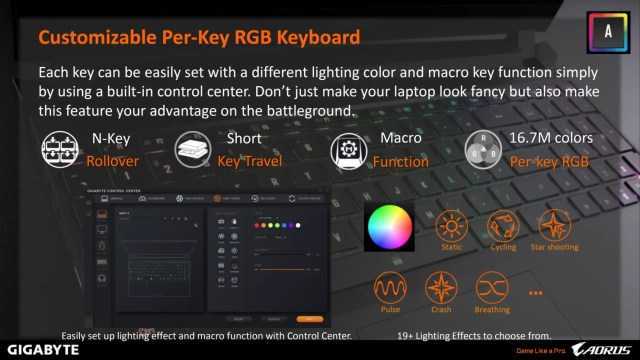
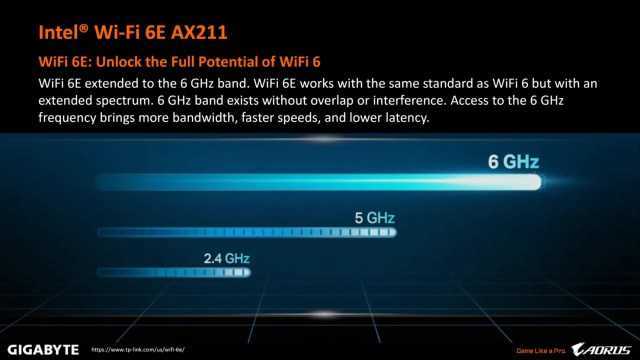
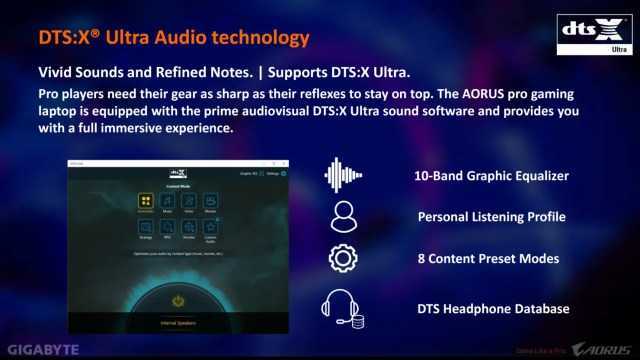
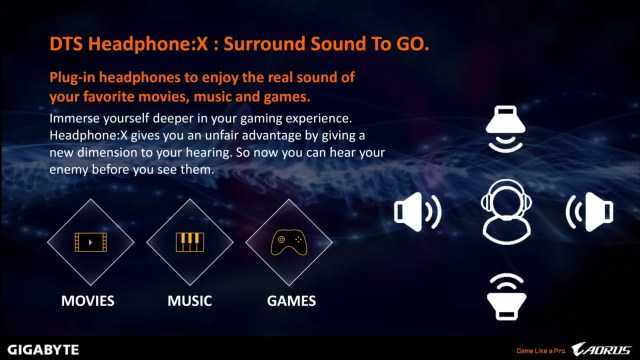
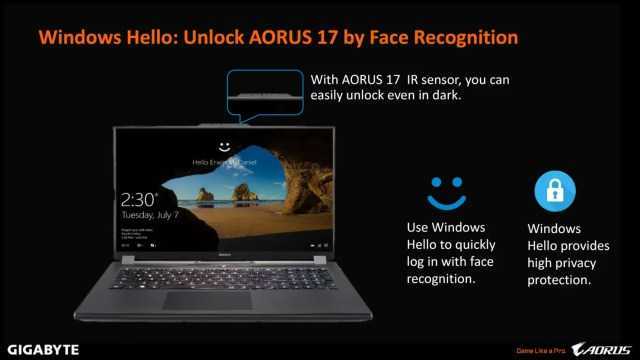
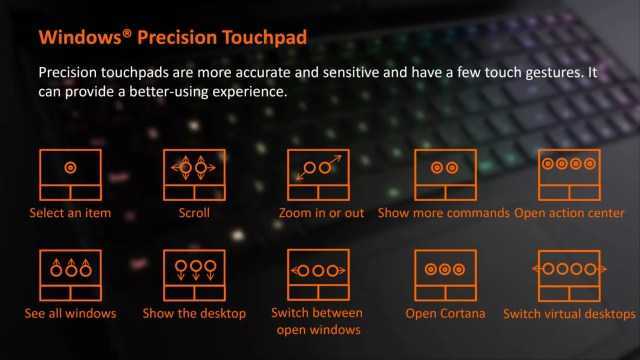
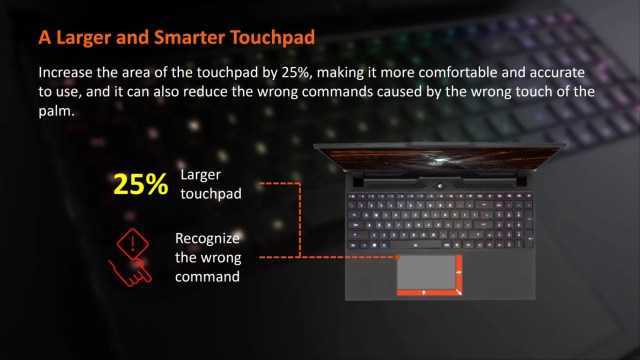
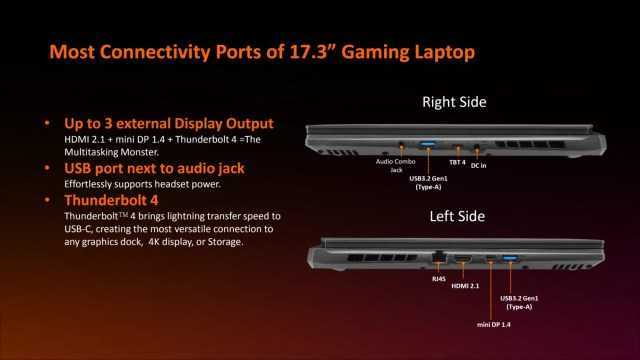

Все модели оснащены процессором Intel Alder Lake-P на выбор до Core i9-12900HK. Варианты памяти включают до 64 ГБ DDR5-4800 (SO-DIMM x 2), а хранилище можно расширить с помощью двух слотов M.2, оба из которых совместимы с Gen 4×4. Все модели поставляются с адаптером питания 240 Вт для зарядки аккумулятора 99 Втч. Дисплей представляет собой 17,3-дюймовый FHD с частотой обновления 360 Гц, и все это весит 2,7 кг (для базового варианта).
Охлаждение обеспечивается за счет системы охлаждения Gigabyte Windforce Infinity, которая имеет 4 вытяжных вентиляционных отверстия, тройные тепловые трубки, специальные тепловые трубки для видеопамяти графического процессора, а также отдельную для самого графического процессора. Что касается самого дизайна, вы видите 15-дюймовое шасси с 17-дюймовым экраном, более крупную и умную сенсорную панель с увеличенной на 25% площадью, которая может распознавать неправильные вводы, и множество портов ввода-вывода на боковых портах, таких как Thunderbolt. 4, USB 3.2 (Gen 1) и тройные выходы на внешний дисплей (и это лишь некоторые из них).
Ноутбуки Gigabyte AORUS 15 (2022)
Ноутбуки Gigabyte AORUS 15 во многом похожи на своих братьев и сестер AORUS 17, за исключением того, что они поставляются с 15-дюймовым дисплеем. Есть также три конфигурации, которые включают модели YE, XE, KE, и главное отличие — это снова конфигурация графического процессора. Конфигурации дисплея включают панель FHD 360 Гц и QHD 165 Гц, а все это весит 2,4 кг (для базового варианта).
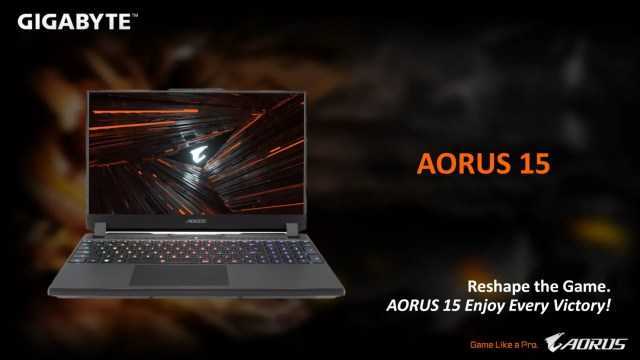
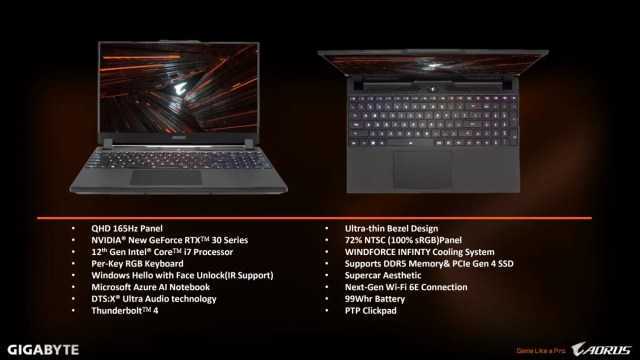
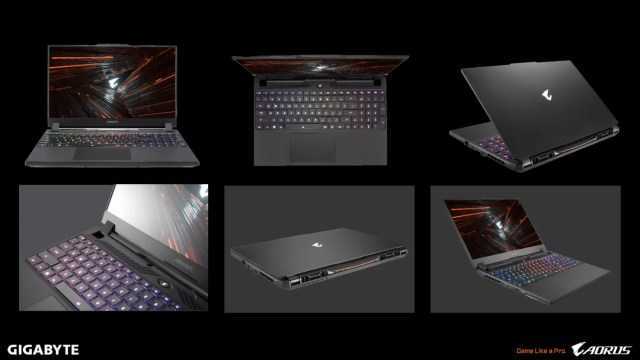
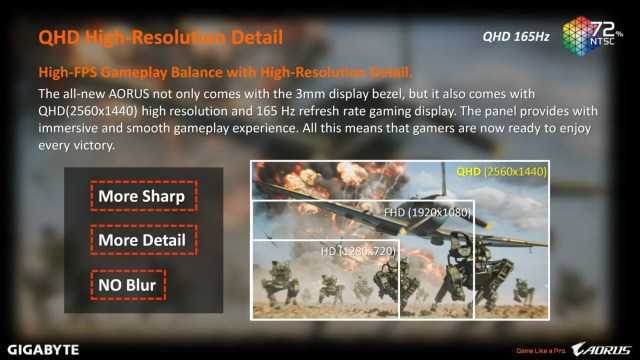
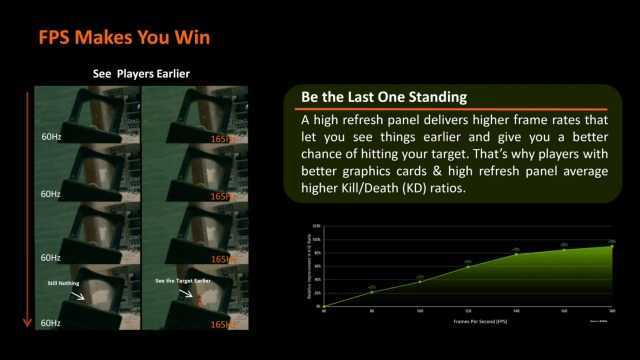
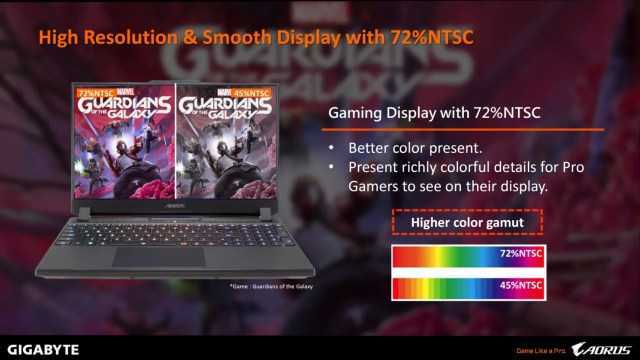

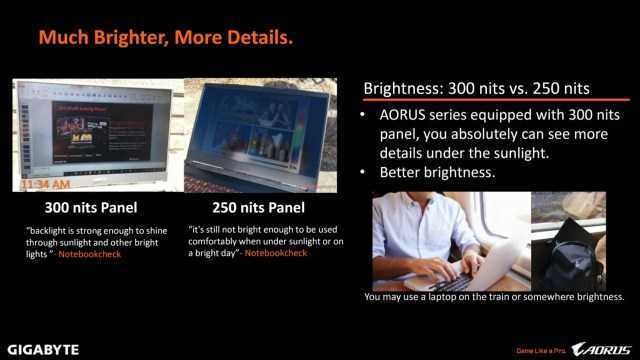
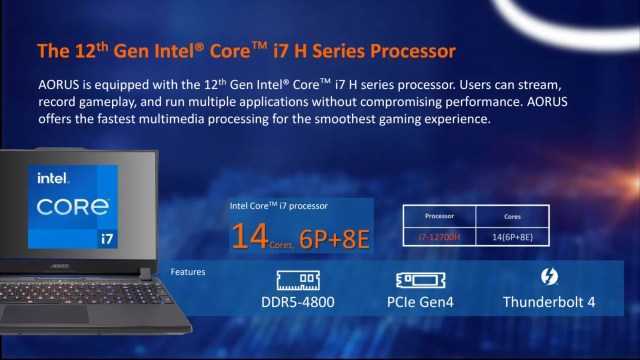

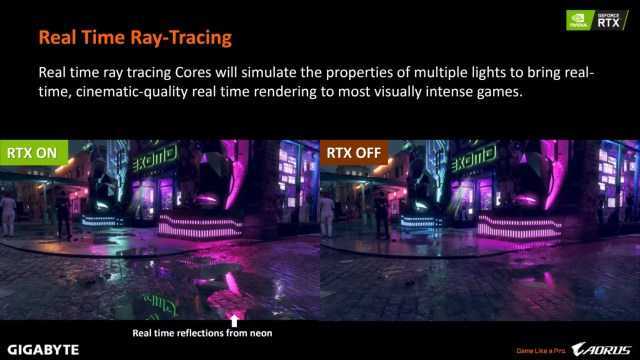
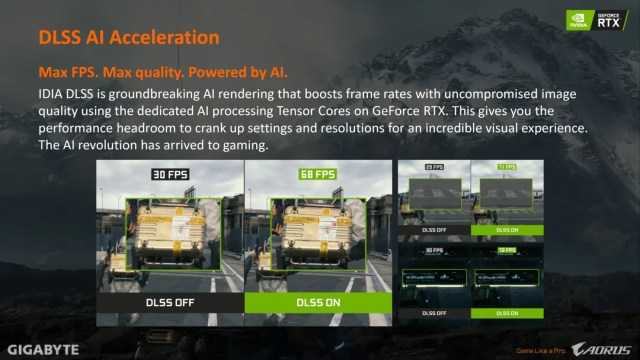
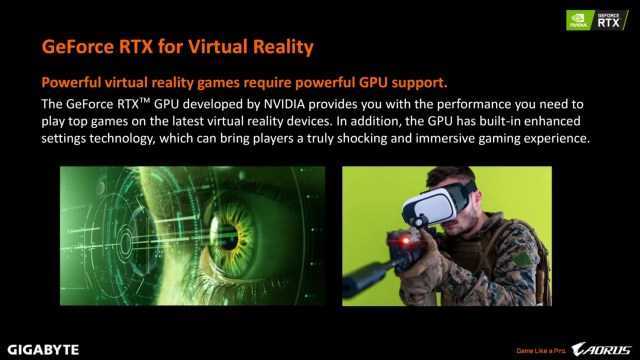
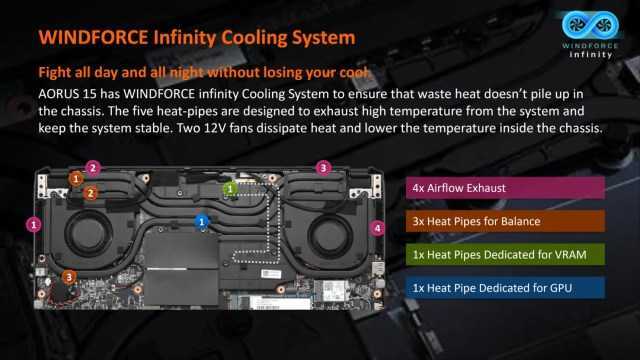
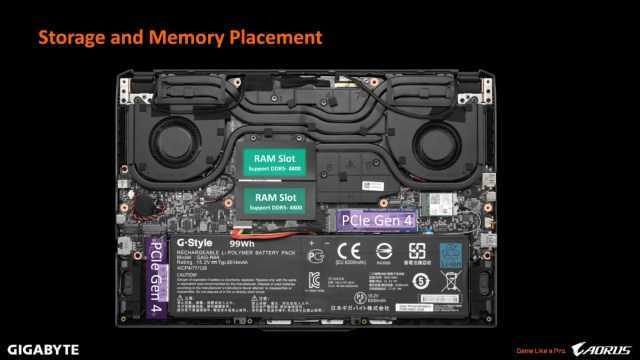
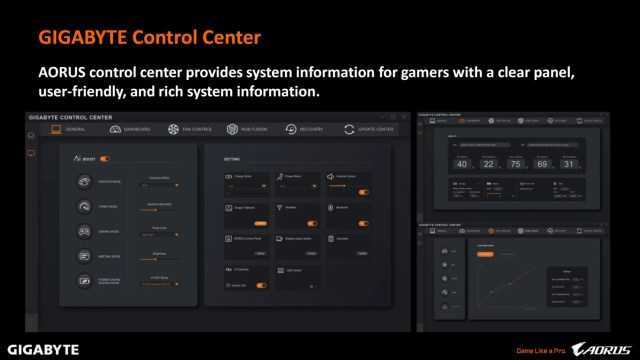
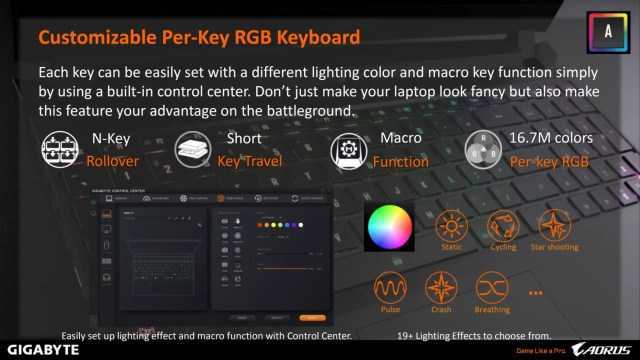
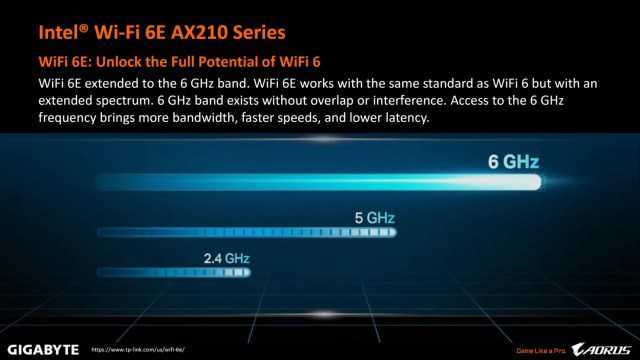
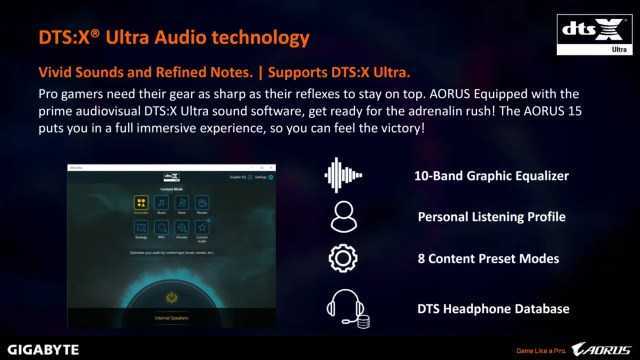
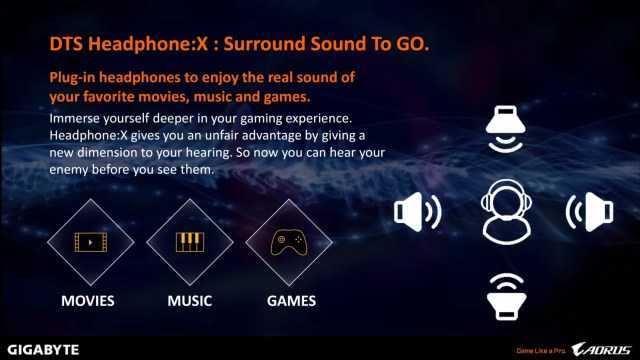
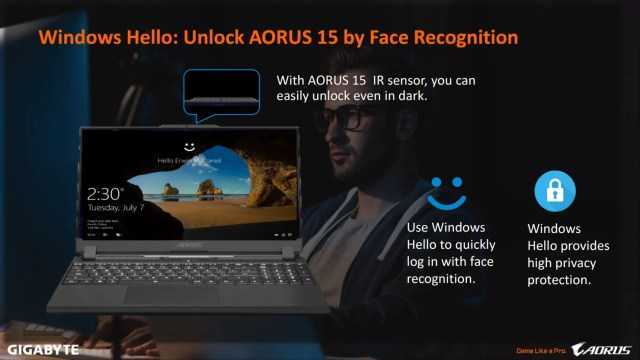
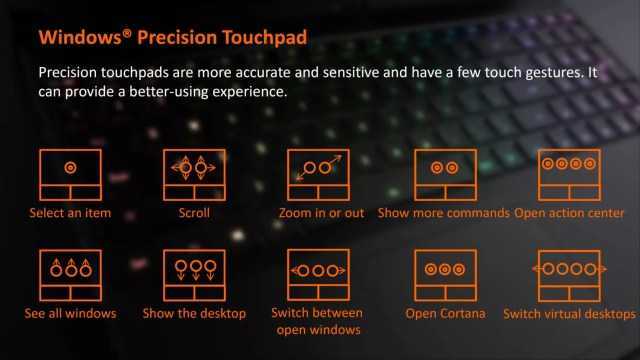

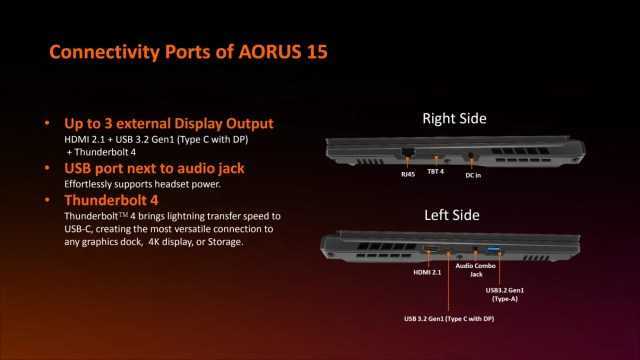
Ноутбуки Gigabyte AORUS 17 и 16 (2022)
Далее у нас есть линейки Gigabyte AERO 16, AERO 17 и AERO 16 Creator, которые отличаются более гладким стилем по сравнению с игровой эстетикой линейки AORUS. Все модели имеют очень узкую рамку и оснащены дисплеем 4K HDR / AMOLED с соотношением сторон 16:10. Шасси изготовлено из алюминия с ЧПУ и предлагает широкий выбор опций. AERO 16 и AERO 17 также имеют три основных конфигурации, включая YE5, XE5 и KE5.
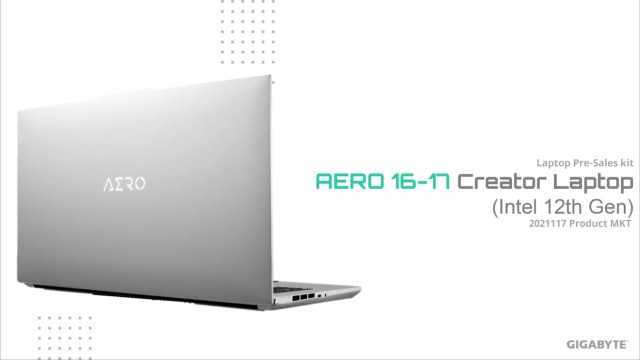
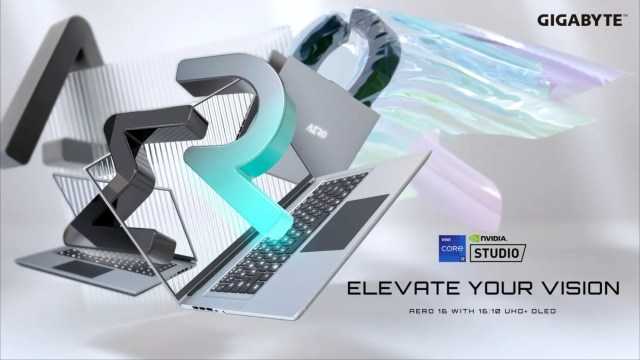
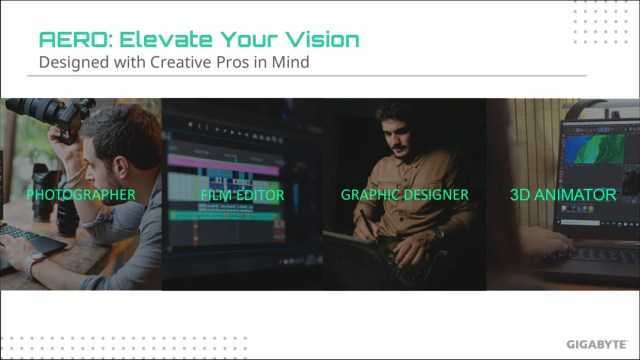
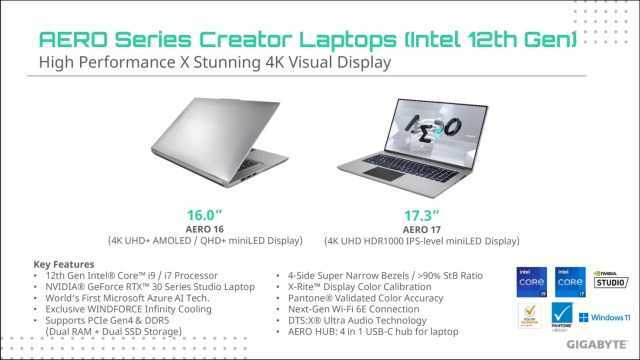
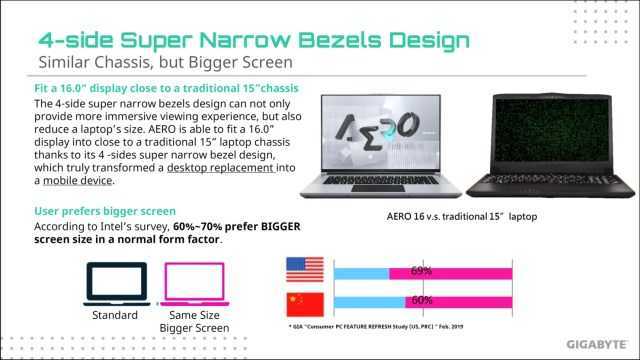
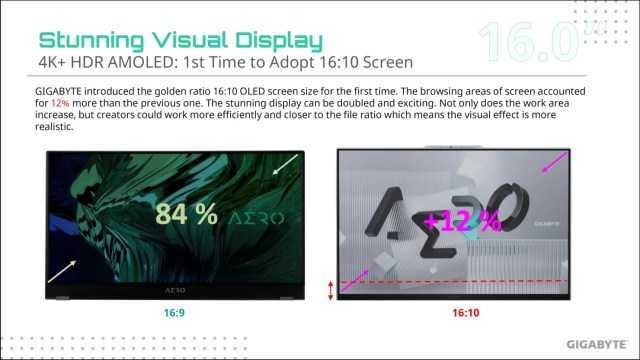
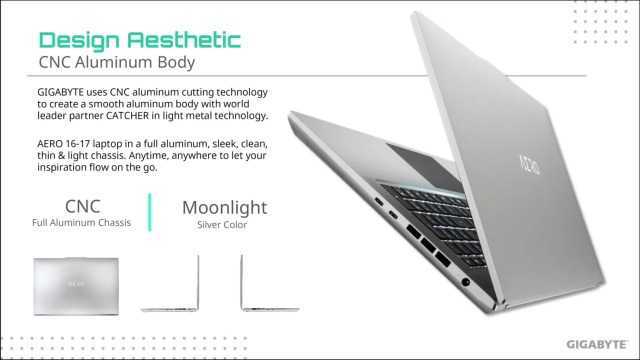
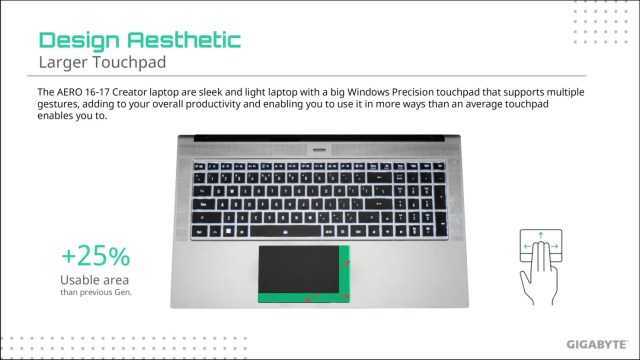
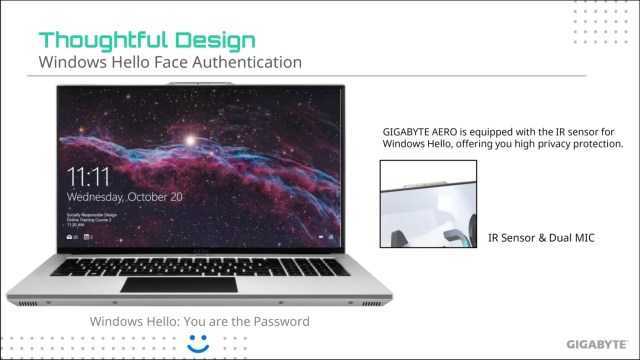
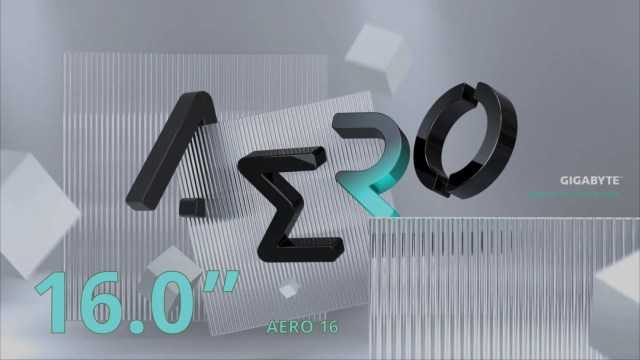
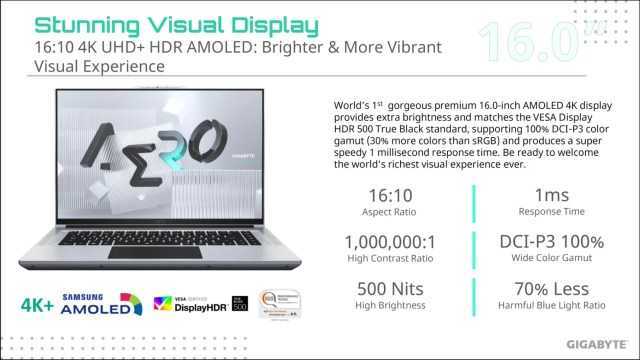
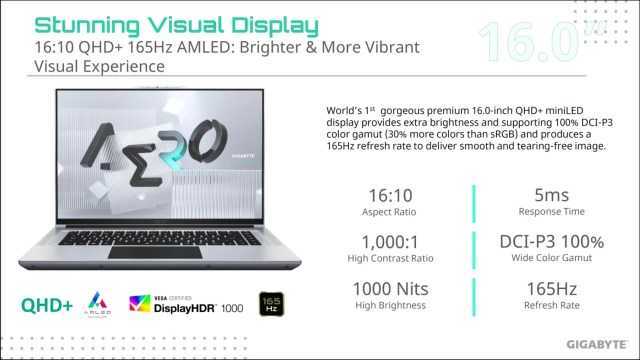
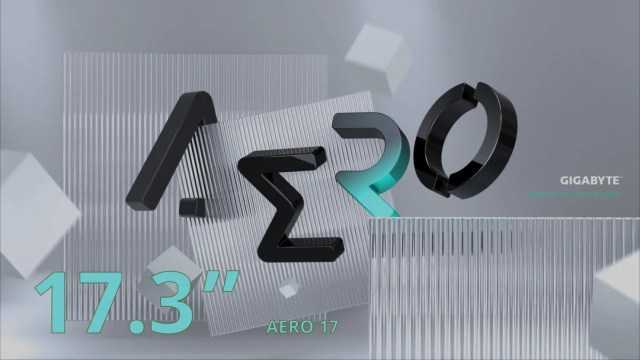
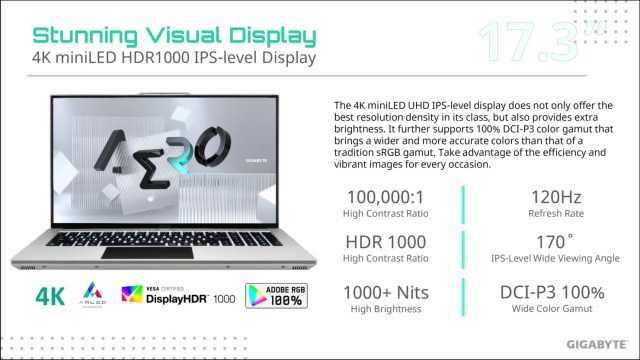
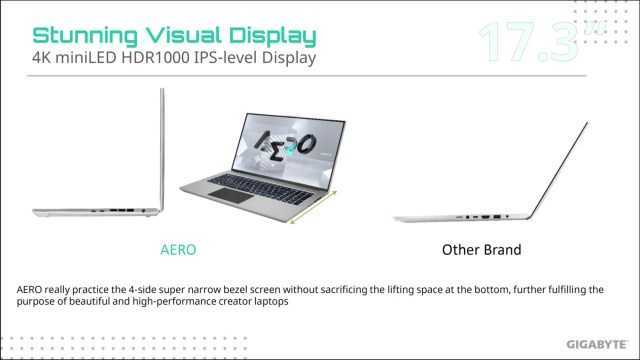
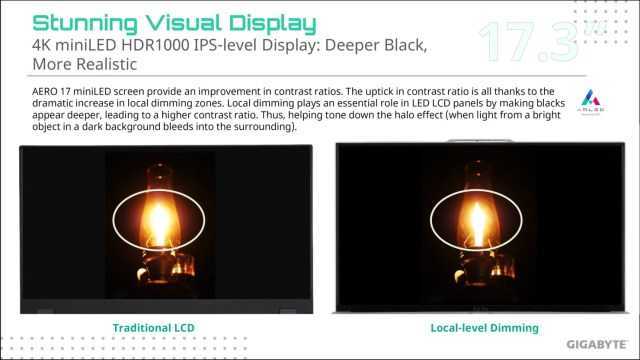

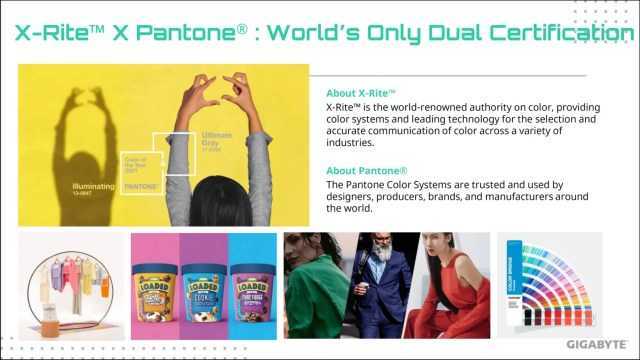
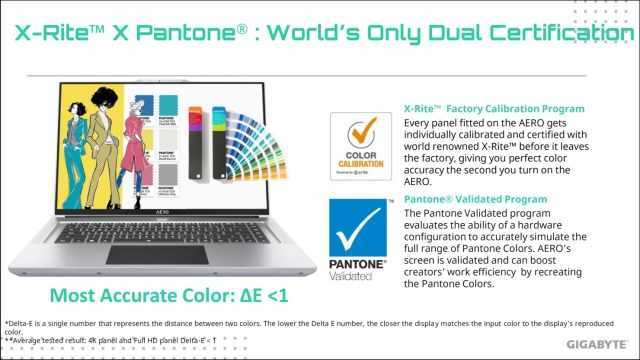
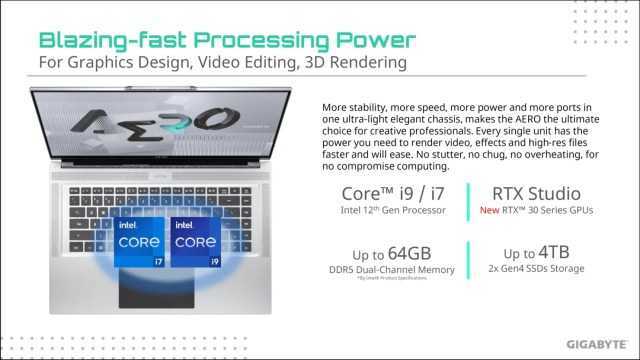
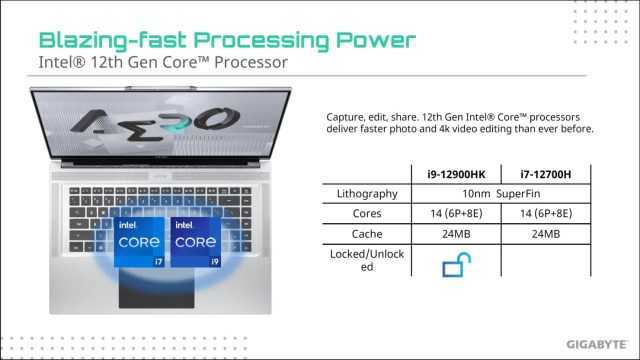
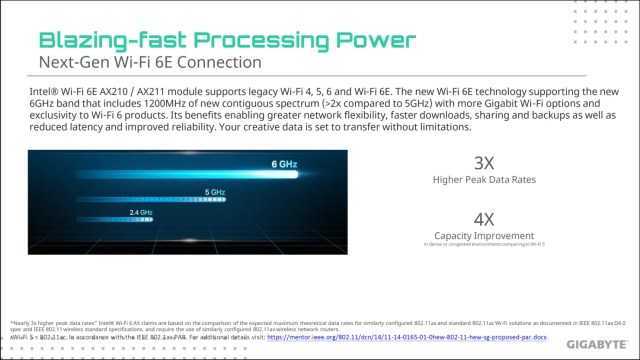
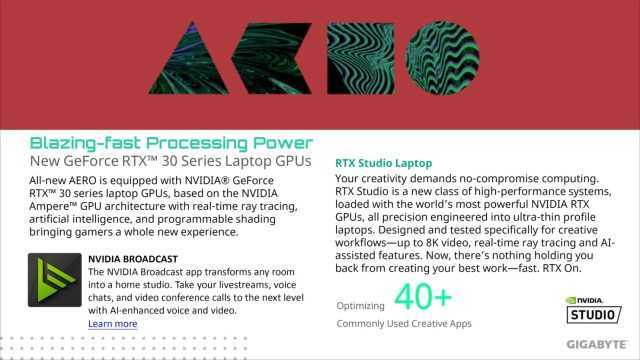
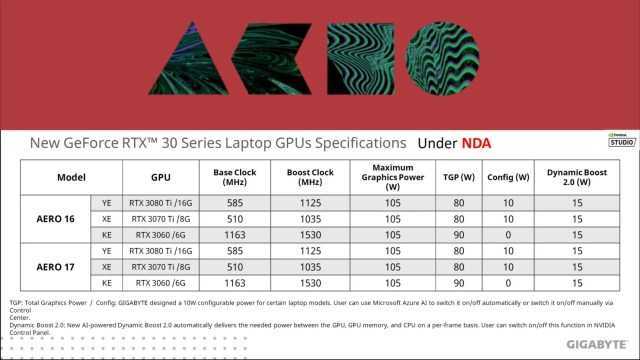
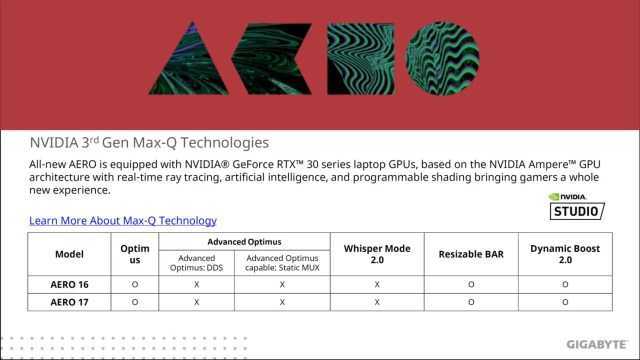
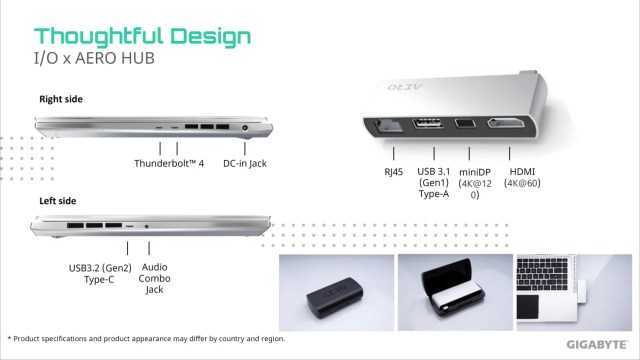
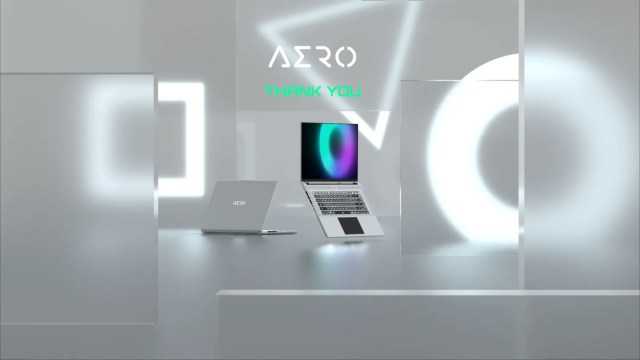
В то время как AORUS 17 сохраняет тот же 17,3-дюймовый (мини-светодиодный дисплей UHD IPS с HDR1000 / 120 Гц) во всех вариантах, AERO 16 XE5 и YE5 / KE5 имеют разные панели. панель QHD + miniLED и UHD + Samsung AMOLED. Однако лучшим вариантом является YE5, который включает в себя Intel Core i9-12900HK, 32 ГБ памяти DDR5-4800, графический процессор RTX 3080 Ti для ноутбука и два слота M. 2 Gen 4×4 и весит 2,3 кг (для базовой конфигурации). Графические процессоры также имеют те же характеристики, что и в вариантах AERO 16 и 17, которые можно увидеть в таблице спецификаций ниже.
Официальные спецификации ноутбуков Gigabyte и AORUS 2022:

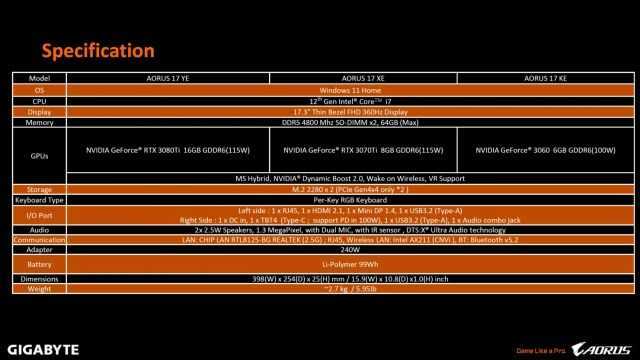
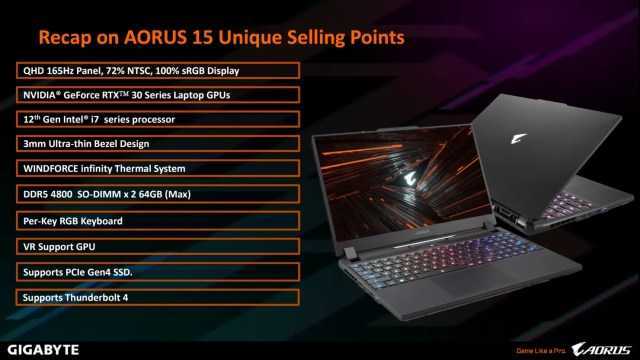
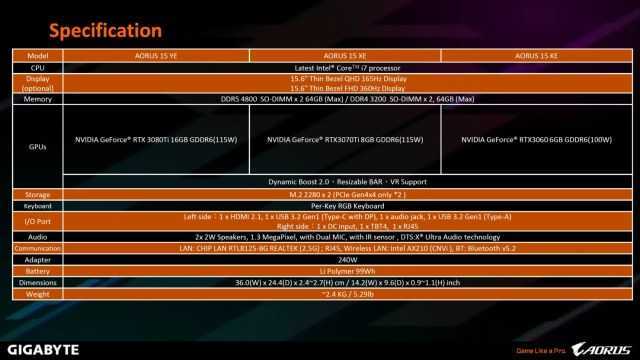
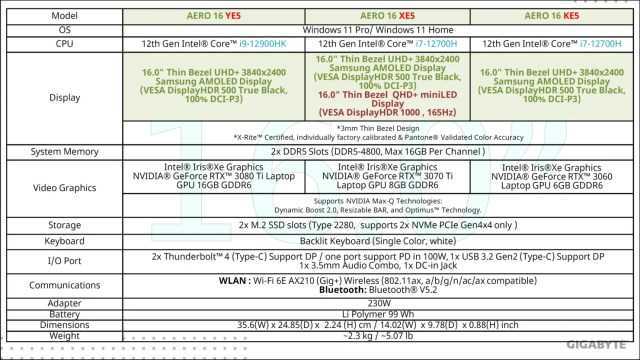
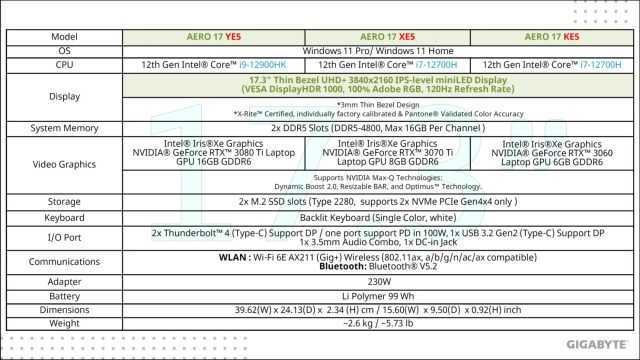
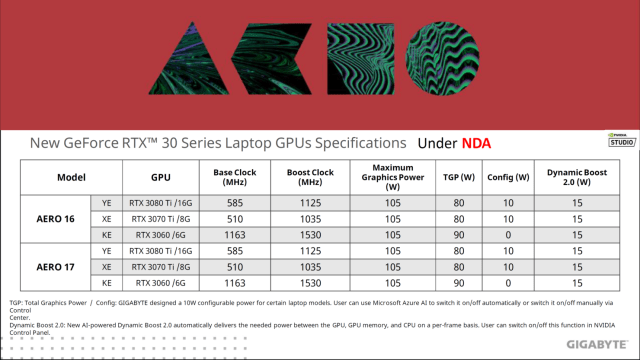
MSI
MSI is announcing a number of new gaming and creator-focused laptops today, ranging from two Creator Z16 models (which are aimed at the kinds of customers that would otherwise have bought a MacBook Pro), down to its more gaming-focused “Katana” and “Sword” machines.
The Creator Z16 has a 120Hz 16:10 QHD+ touch display and is available with an Nvidia GeForce 3060, and either a Core i7-11800H or a Core i9-11900H. Stepping down to the Creator M16 still gets you a QHD+ display, but its internal specs top out at Nvidia’s RTX 3050 Ti and Intel’s Core i7. There’s also a new Creator 17 using the new chips, which is available with up to a Core i9 and RTX 3080, and comes complete with a Mini LED display.
On the gaming side, MSI has also bumped over a half dozen laptops up to the new processors, including the GE76, GE66 Raider, GS76 Stealth, GS66 Stealth, GP76 Leopard, GP66 Leopard, GL76 Pulse, and GL66 Pulse. Finally, there’s the new “Katana” and “Sword” laptops. These are available with up to Core i7-11800H CPUs and include versions with Nvidia RTX 3060, RTX 3050 Ti, and RTX 3050 GPUs.
MSI’s Creator Z16 starts at $2,599, its Katana models start at $999, Sword will start at $1,099, and pricing for the Creator M16 is yet to be announced. The laptops are due to release later this month on May 16th. Read more about MSI’s new laptops here.



























